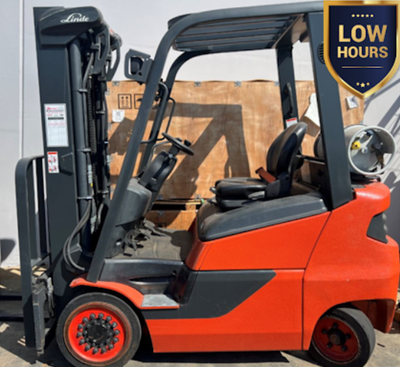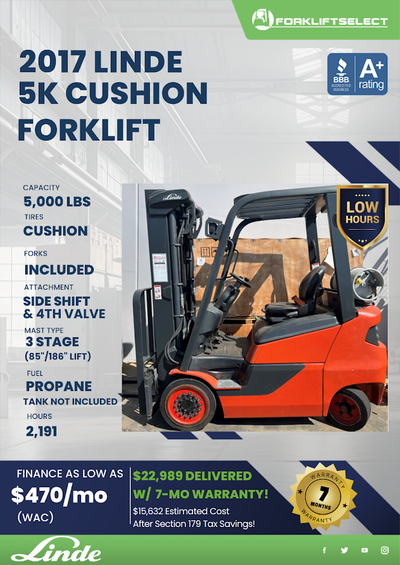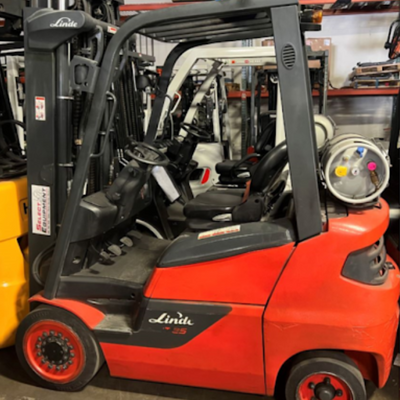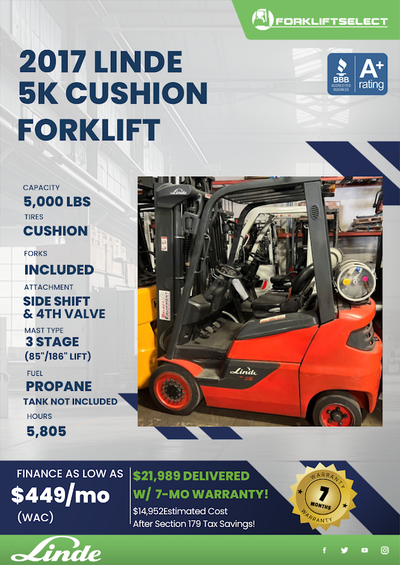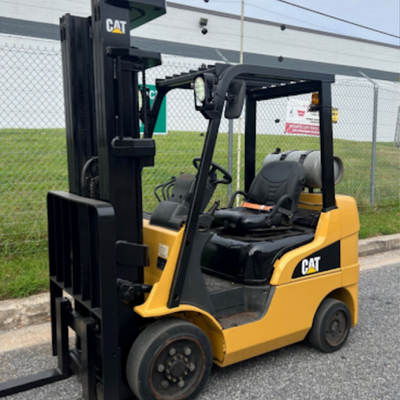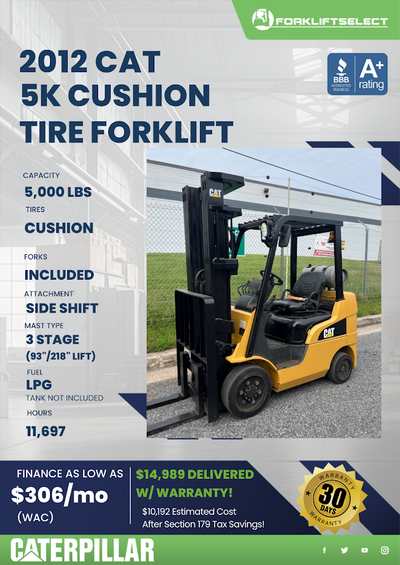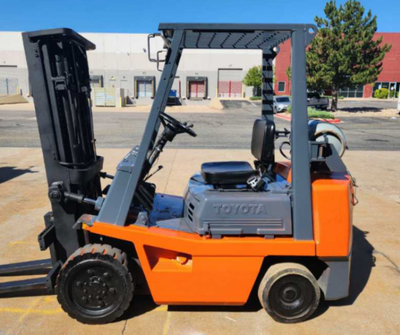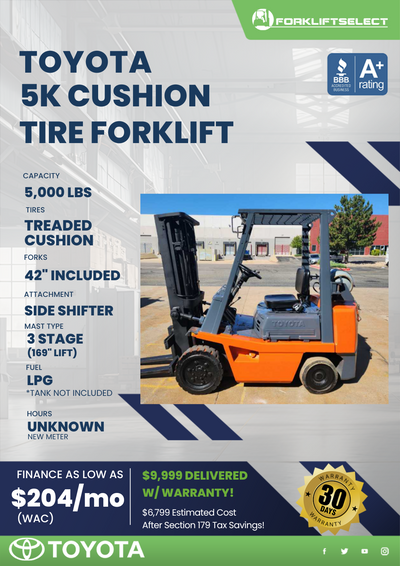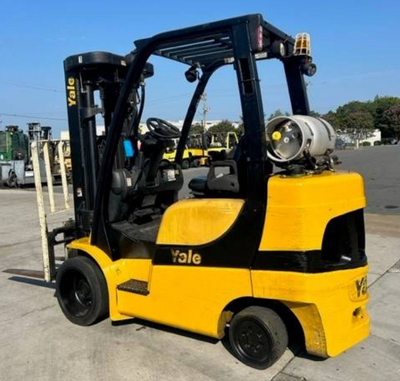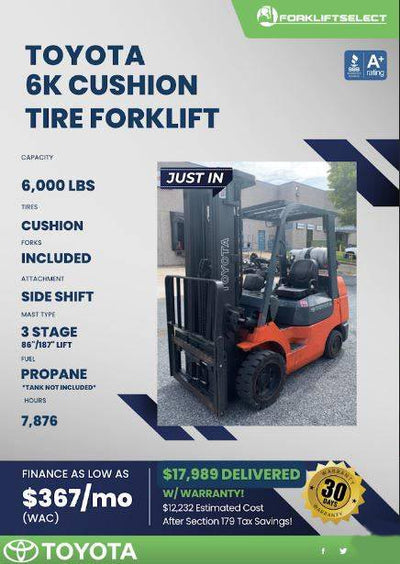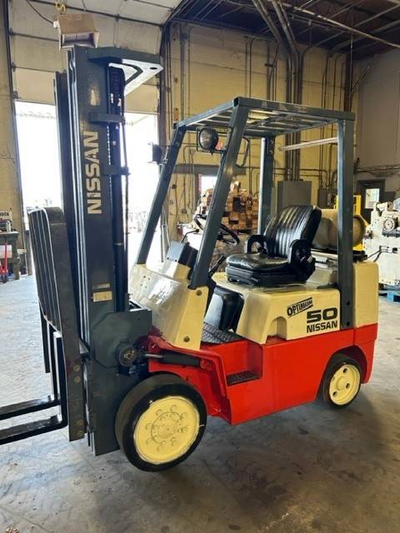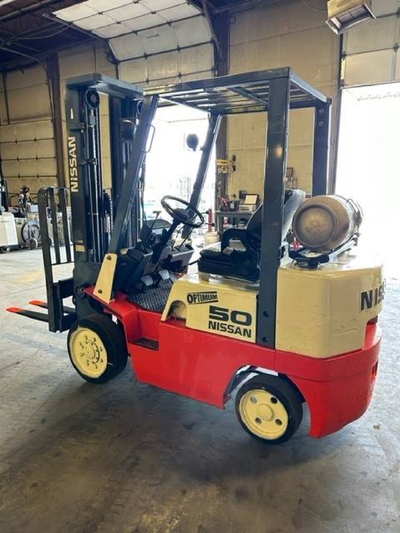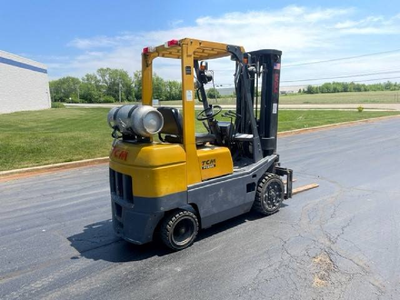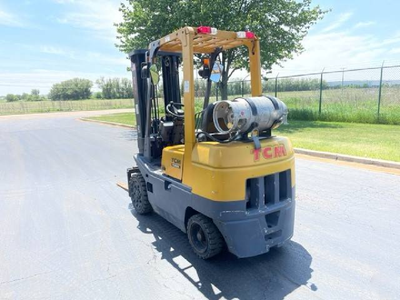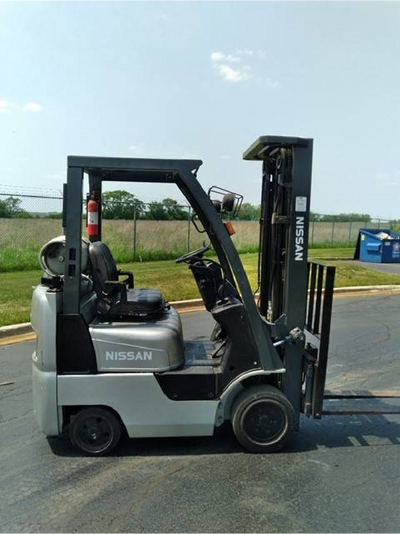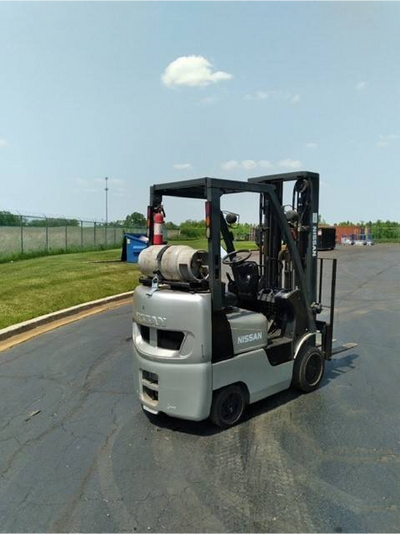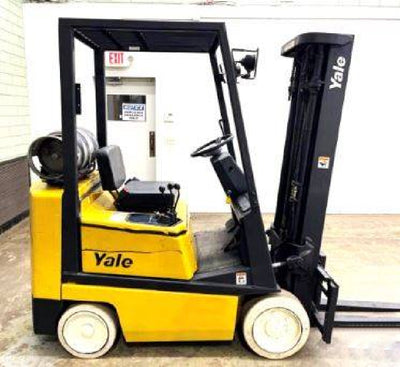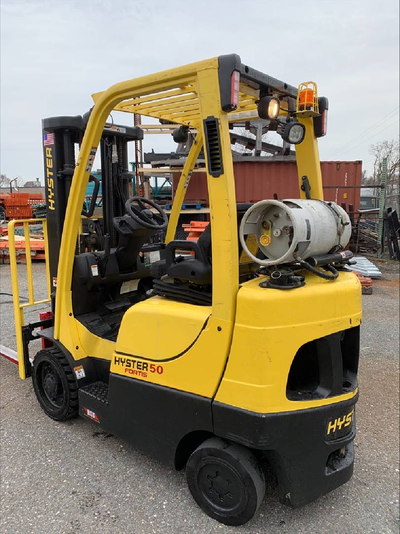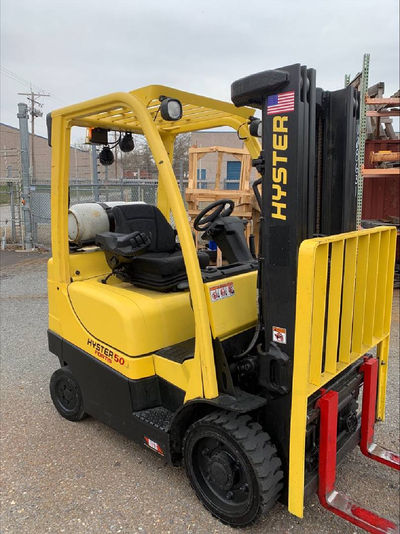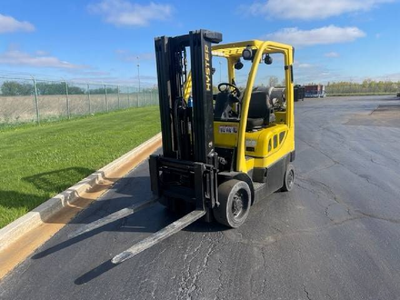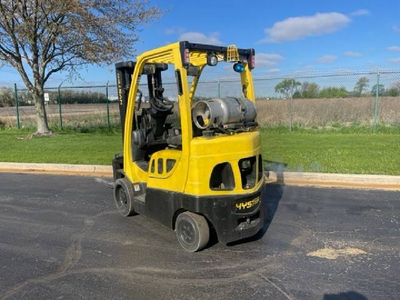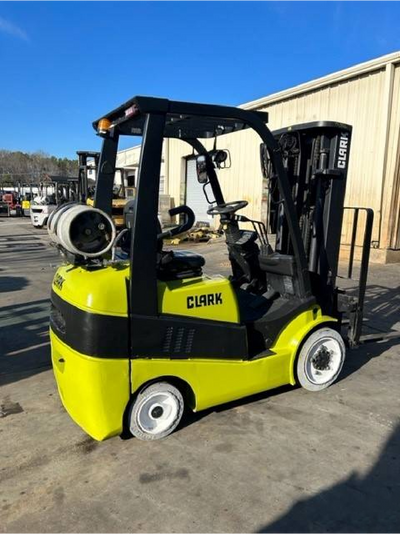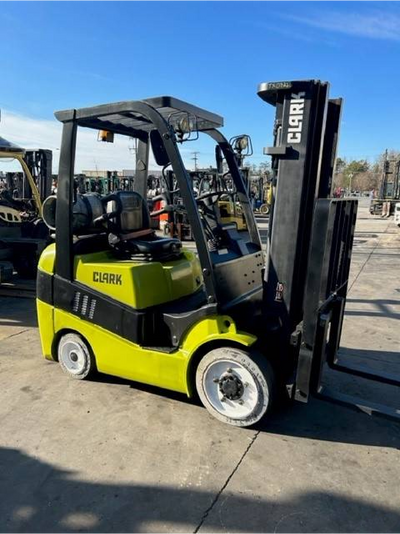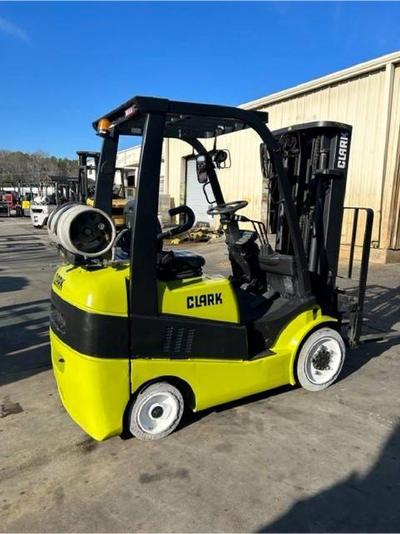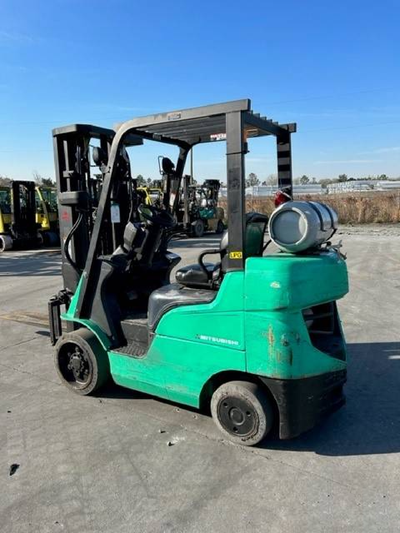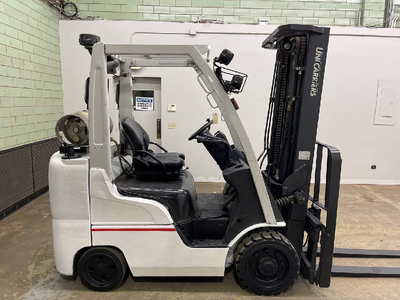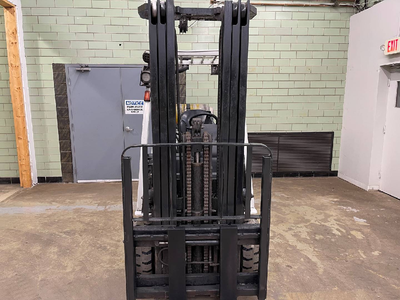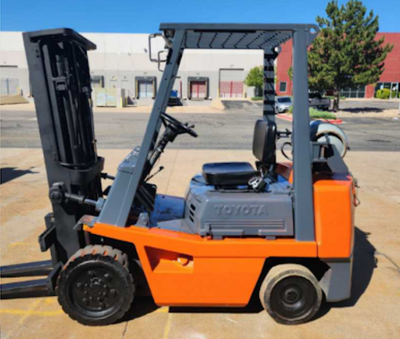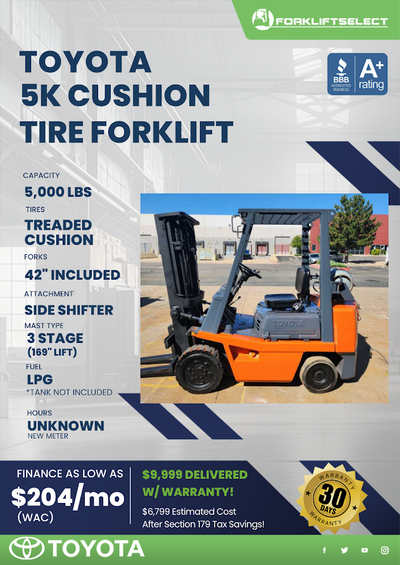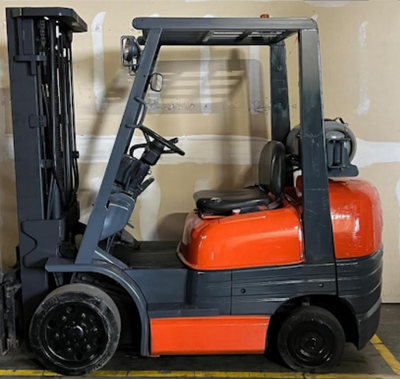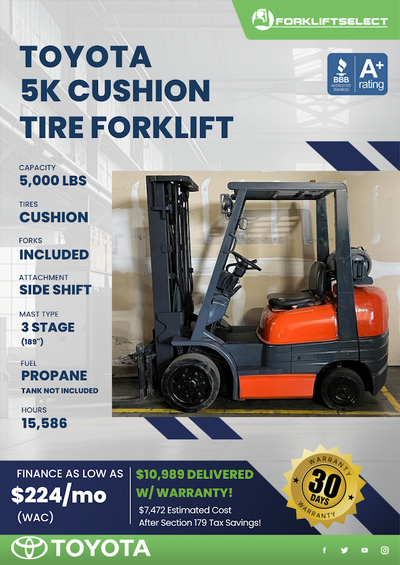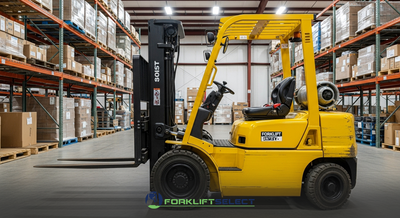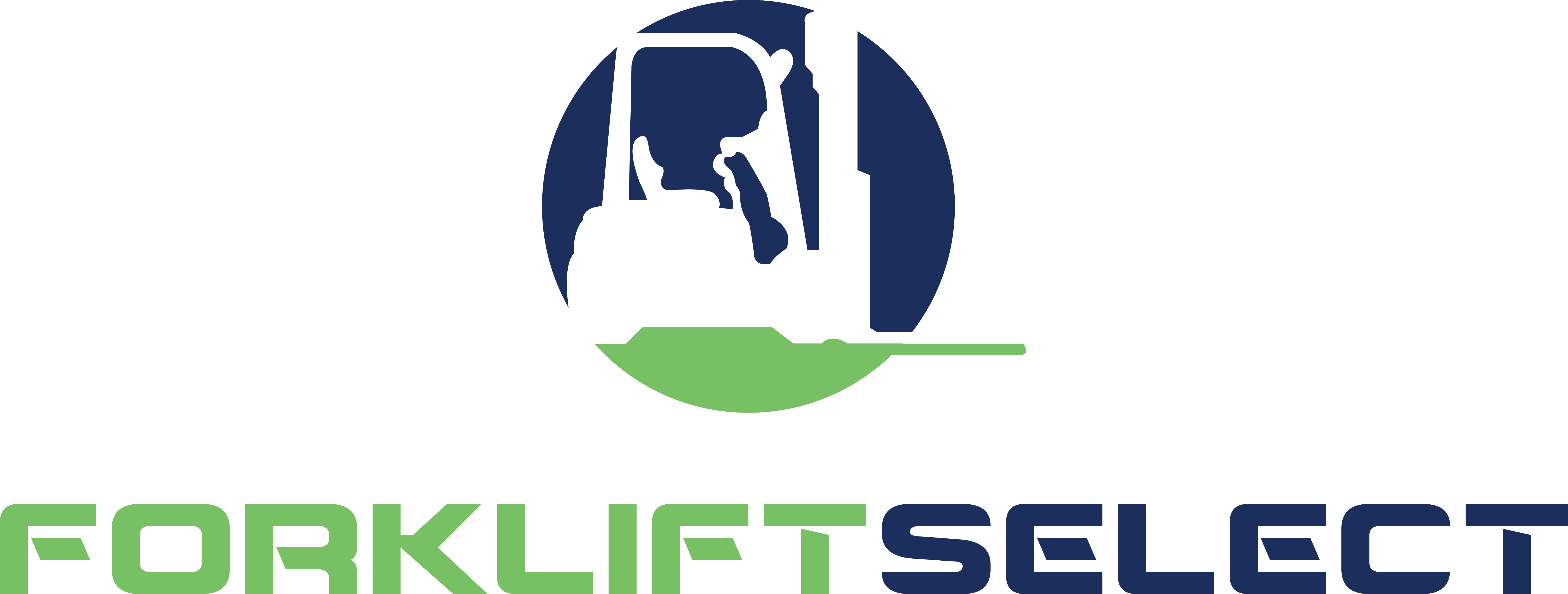What forklift is right for my business?
By understanding the most common types of forklifts and what they are used for, you can make an educated decision.
If you need to move heavy loads in a warehouse, on a construction site or in a storage facility, a forklift can usually do the job. There are many different types of forklifts, and each type can fulfill multiple purposes.
But with a wide selection of styles and types of forklifts to choose from, it can be difficult to know which lift is best for your needs and environment.
Counterbalance forklifts are best used for material handling.
Counterbalance forklifts are the most common trucks used in virtually all material handling functions. They feature dual forks for heavy loads to be moved from one place to another. They are mostly used in indoor warehouses and stores, although they can be used outdoors, on stable, even surfaces.
Three-wheel counterbalance forklifts are best for narrow aisles.
These forklifts feature three wheels as opposed to four in their counterbalance forerunners. Three-wheel counterbalance forklifts have enhanced maneuverability for tight spaces and narrow warehouse aisles.
Reach truck forklifts are best for use in a warehouse with high rise storage pallet racking.
Reach trucks are known for what they are named after, their extended lift height. There are different types of reach trucks, including the Stand-Up trucks and Double-Deep trucks. Stand-Up trucks are the most common and are often used where there’s only one load per bay.
The forks slide under the pallet to lift and move them. Double-Deep trucks have longer forks, making them ideal for areas where multiple pallet loads are stored in each bay since they are able to reach to the back of the bay.
Sideloaders are best used in narrow aisles.
They have forks which are mounted to the side of the truck and are designed to pick up wide or long loads that would be difficult for a typical forklift to manage. There are two main types of side loader forklifts, the enclosed cab that is most commonly used outdoors, and a stand-up version that is more suited to indoor work.
Telescopic handlers are best used in agriculture and industries that require high lifting.
These devices are often mistaken for cranes and are able to reach heights and angles that standard lift trucks aren’t able to. They offer many features that make them much more useful in a range of situations.
They are often thought of as small cranes, rather than forklift trucks. Telescopic handlers also have the additional advantage of a single telescopic boom that allows the truck to become a much more powerful and useful piece of equipment.
Rough terrain forklifts are used for outdoor construction.
They have inflatable tires with thicker threads, allowing stability on uneven rough terrain. Rough terrain forklifts also have a more powerful engine so it can reach higher speeds and better maneuverability.
They are perfect for transporting heavy loads across rugged terrain, with some models handling up to 3 tons per load. The carefully calibrated counterbalance at the back of the truck prevents overbalancing, with it being easily operated in mud, ice or snow.
Pallet trucks and lift trucks are best used in warehouses and storage facilities.
They are used for the easy transportation of pallets. All pedestrian operated trucks have forks that slide beneath the pallet and use a hydraulic jack to lift the load from the ground for easy maneuverability.
There’s a wide variety of styles and designs available, some capable of moving loads of 5000 lbs, but the main difference is between the lift and pallet trucks. The pallet truck has a limited reach and is used for moving loads from one place to another at ground level, while the lift truck is more complex and is capable of transporting and lifting a palletized load onto a higher level or stacking loads on top of each other.
Still not sure which forklift will do the best job?
Call or email our lift experts today! One of our material handling staff will be happy to answer your questions. Don’t forget to check out our Forklift For Sale page.
Additional forklift information:
Common forklift questions
6 forklift safety tips
8 benefits of buying a used forklift
Where To Buy a Forklift





 (877) 733 - LIFT
(877) 733 - LIFT Back to blog
Back to blog

